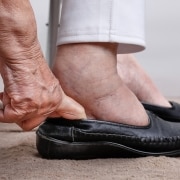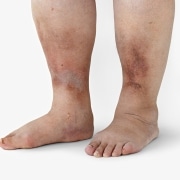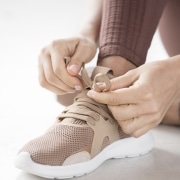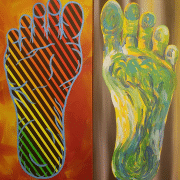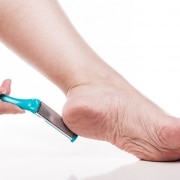If you have diabetes, you do your very best to keep it under control. You monitor your blood sugar, take your medications, time your meals and balance your carbs and protein. But sometimes, no matter how vigilant you are, your diabetes can affect your body in ways you may not expect.
Effects of diabetes on your feet
The effects of diabetes on your feet may seem minor — but can turn serious very quickly. When you have diabetes, common foot problems such as blisters or calluses can become infected easily. This is partially due to the compromised ability to heal, as well as diabetic neuropathy, which can prevent you from feeling the pain that alerts you to a problem.
Because less efficient healing and decreased sensation puts your feet at risk, focusing on self-care is a must. Regular visits to our office allows Dr. LaMour to examine your feet and keep ahead of any problems that may be developing.
To help you in your preventive foot care efforts, we’ve pulled together a list of other effects diabetes could be having on your feet and toes:
Athletes foot: For those who don’t have diabetes, athletes foot can usually be resolved using over-the-counter (OTC) meds. For a person with diabetes, athlete’s foot can lead to serious complications. The redness, cracking, and itching of athlete’s foot is caused by a fungus. Should the fungus enter the bloodstream, it can wreak havoc on your body’s systems and is quite difficult to control.
Nail Fungus: People with nail fungus in general can have a difficult time treating the cause. Identified by thick, yellowish-gray, nails, which may crumble, nail fungus is typically treated with a topical or oral medication. Given the compromised healing abilities that comes with diabetes, you may have a tough time getting rid of your nail fungus. If you think you have toenail fungus, come in to see us right away.
Ingrown toenails: Pressure on the feet and toes is of particular concern for diabetics. It’s one of the primary causes of ingrown toenails. An ingrown toenail is usually a very painful condition, however, if you’ve lost feeling in your toes, you may not know you have an ingrown toenail until it becomes infected.
Corns, calluses, and bunions: These common foot problems are usually easily treated, often by using OTC methods. When a person with diabetes develops these common afflictions though, it raises the potential for infection. Don’t attempt to resolve your corns, calluses, or bunions yourself. You can develop a sore, which can easily turn into an infection, which can be a deadly condition for you.
Dry skin: When your glucose levels run low, it robs you of moisture in your skin. This results in dry skin, a common problem for people with diabetes. Be sure to keep your feet moisturized with a doctor-approved lotion for diabetics. Follow a skin care regimen and use a moisturizing soap when you bathe. If the dry skin on your feet becomes red and itchy, come in to see us.
Foot ulcers: Pressure ulcers on your feet can be a regular occurrence for some patients with diabetes. Ill-fitting shoes, hammertoe, or distance walking and running can create the opportunity for your foot or toe to rub against your shoe and cause sores. Because of compromised nerve endings, you may not feel the developing blister, or sore, until it’s become ulcerated into a deep sore. If that happens, you need immediate medical care, so call us.
The most serious complications to your feet from diabetes
As you probably know, the most serious diabetes-related conditions impacting your feet are neuropathy and peripheral vascular disease.
Neuropathy, as discussed above, prevents you from feeling pain when you have any kind of injury to skin on your feet and toes, which can lead to serious infection. Bacteria can enter your bloodstream and cause all sorts of health complications, including sepsis, which has the potential to be life-threatening.
Peripheral vascular disease compromises blood flow (circulation) which can affect healing and limit the blood supply, resulting in gangrene. When you develop peripheral vascular disease, it puts you at serious risk of amputation due to gangrene.
If you have diabetes, contact us to schedule an appointment for a thorough assessment of your foot health. Just call one of our offices in Austin or Pflugerville or click the “request appointment” button to get started.





